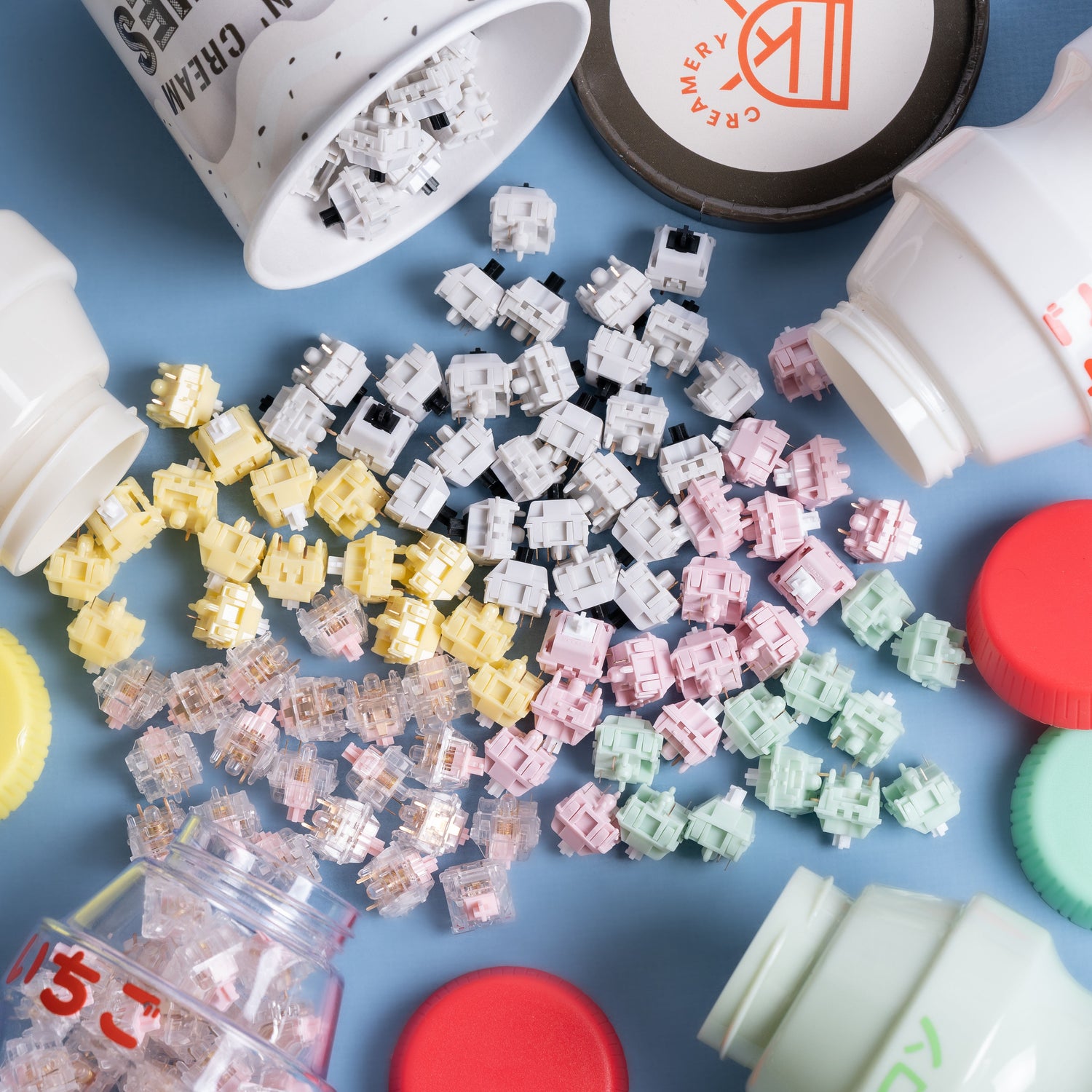
What Components Make a Custom Mechanical Keyboard?
Share
Mechanical keyboards are becoming increasingly more popular as time goes on, and it’s not hard to see why. Not only do they look cool, but they also offer a highly customizable typing experience that can give you the edge in your gaming or work endeavors. Let’s break down what components make up a custom mechanical keyboard.
Case
The case is the housing of your custom mechanical keyboard that holds all of its components together and gives it its shape and structure. Cases come in all shapes and sizes, from slim designs made for portability to larger designs with built-in wrist rests for more comfortable typing sessions. Cases can also be customized with different finishes such as wood, aluminum, brass, stainless steel, carbon fiber or a variety of other materials for an extra touch of personalization.
PCB
The PCB is a critical component of any keyboard. It acts as the connection between the wiring, keys and controller chip, enabling input and communication with other parts of the system. Without it, a keyboard wouldn't be able to carry out its intended function. When keys are pressed, the PCB relays this signal to the controller chip through layers of pathways etched into its surface. This chip communicates the signal to other components in the system, and processes commands from certain combinations of key presses. The PCB also contains resistors which protect circuitry from voltage overloads, keeping your hardware safe from electrical damage. Most boards today include a well-designed PCB to ensure a phenomenal typing experience.
Plate
One of the most important factors that contribute to the typing experience is the keyboard’s plate. There are a few options available for plates, each offering unique benefits. The most common plate options are brass, aluminum, FR4, and polycarbonate. However, other materials such as polyoxymethylene (POM), carbon fiber, and steel can be found in the hobby as well. Here's what you can expect with each of the common plate options:
- Brass:
- A dense metal composed of copper and zinc. Brass plates provide very little flex.
- Aluminum:
- A lightweight metal. Aluminum plates are softer and more flexible than brass, but not as soft as their non-metal counterparts.
- FR4:
- A glass-reinforced epoxy laminate dielectric material often used in PCB production. FR4 is less flexible than polycarbonate, but more flexible than aluminum.
- Polycarbonate:
- A highly flexible thermoplastic. Polycarbonate plates can provide a bouncy typing experience.
Ultimately, deciding which plate you would like depends on preference - but you can be sure that each option will provide a high quality experience for any type of keyboard user!
Switches
The heart of any keyboard are its switches. Switches are what allow each keystroke to register. They also dictate how easy it is to type or game on your keyboard. Switches come in three main types — linear, tactile, and clicky — with each having its own unique feel and sound. Linear switches are smooth when pressed, tactile switches provide a bump midway through keypress, and clicky switches produce a tactile sensation and an audible clicking sound when pressed. The type of switch you choose depends on your preferences; some people prefer tactile or clicky because they provide more feedback than linear switches do.
Keycaps
When you look at your keyboard the first thing you see are the keycaps. These are the plastic covers that go over each switch with legends on them so you know which key you're pressing. Keycaps come in various shapes, sizes, and materials. The different shapes and sculpts are referred to as "profiles". Some common profiles are Cherry, SA, and KAT to name a few. They're often made with ABS or PBT plastic, but can come in other materials as well. ABS and PBT keycaps will either be dye-sublimated or double-shot. This refers to the manufacturing process used to create the design on the cap. Dye-sublimation uses high heat to print legends onto the face of the keycaps. Whereas double-shot uses injected plastic to create the legends.
Hopefully, this article provides you with a brief overview of the various components in a keyboard. If you still have questions, please don't hesitate to shoot us a message! Also, stay tuned for future blogs where we'll dive deeper into each of these categories.

